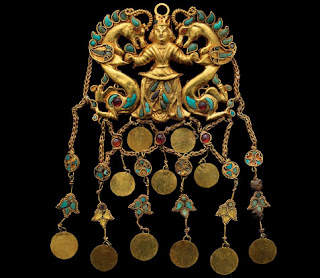 |
| © D.Donne Bryant |
PEOPLES OF THE WORLD Name: Tzeltal
Living Area: Los Altos region, Chiapas State (Mexico)
Population: more than 278.000
Language: Tzeltal
Comments:
The Tzeltal people are the largest indigenous group mostly located in the highlands or Los Altos region of the Mexican state of Chiapas. They are one of many groups which are descended from the Mayans, conserving a language (Tzeltal) which belongs to the Western Mayan linguistic group. Most Tzeltals live in communities in about twenty municipalities, under a Mexican system called “usos y costumbres” (usage and customs) which seeks to respect traditional indigenous authority and politics. Women are often seen wearing traditional huipils and black skirts, but men generally do not wear traditional attire. Tzeltal religion is a syncretism of Catholic and native beliefs, with shamanism and traditional medicine still practiced. Most make a living through agriculture and/or handcrafts, mostly textiles; however, many also work for wages to meet family needs.
The Spanish conquered Mayan territory in the early to mid 16th century including what is now the state of Chiapas. They founded the city of San Cristóbal de las Casas which is on the edge of Tzeltal territory and subjected the Tzeltal people to the encomendero system with the payment of tribute. Over most of the colonial period until the Mexican Revolution, this and other indigenous groups were forced to labor in the mines, mills and haciendas of the state for little to no wages. Even during the 20th century economic and political marginalization remained severe, culminating in the Zapatista uprising in 1994, which many of the Tzeltal people participated along with other indigenous groups.
In the mid 20th century, the population of the state and the highlands experience population growth which outstripped local resources. Since the 1930s, many Tzeltals, along with other indigenous and mestizos have migrated from the highland areas into the Lacandon Jungle. These migrants came to the jungle area to clear forest and grow crops and raise livestock, especially cattle. Now there are groups of Tzeltals in the lowlands living with members of other indigenous groups. This process of taking over “empty jungle” to create settlements for highland Chiapas indigenous groups continued with the support of the Zapatistas, which whom the Tzeltals were generally supportive, putting them in conflict with the area’s native Lacandon people and environmental groups.
The Tzeltal call themselves Winik atel, which means "Working Men" in their language, or as the “batzil’op” or “those of the original word” referring to the Mayan oral tradition. They are the largest indigenous ethnicity in Chiapas State, with an estimated 278,577 individuals. The traditional territory of the Tzeltal is to the northeast and southeast of San Cristóbal in the municipalities of San Juan Cancuc, Chanal, Oxchuc, Tenejapa, Altamirano, Sitalá, Socoltenango, Yajalón, Chilón, Ocosingo, Amatenango del Valle and Aguacatenango. Tzeltal territory is bordered by that of the Tzotzils to the west, the Ch'ols to the north and north east and the Tojolabal to the southeast. The Tzeltals distinguish themselves from “Ladinos” (Spanish speakers, usually of mixed race) and from those indigenous in the more rural areas. This is mostly due to a history of socioeconomic oppression and conflict with colonial, then later state and federal authorities. However, many Tzeltal practices have survived to the present day because of this group’s large number against the Spanish and Ladinos, giving it a certain amount of power to resist acculturation to European culture.
Tzeltal religion is a syncretism of Catholic and indigenous elements. Most ceremonies and festivals are associated with saints’ day, organized by sponsors called “mayordomos” with assistants called “alfereces”. Mayordomos in charge of the ceremonies are often leaders in more secular village affairs. These rituals follow an annual cycle. Shamanism and magical practices still remain. The cosmology of the Tzeltals is based on the concept of the interaction among the body, mind and spirit of a person and how these interact with the community, the world and the supernatural. This has a large bearing on traditional medicine, which is important because it is often the first source of treatment for most Tzeltals and due to lack of modern medical facilities, is often the only source. This cosmology ascribes both religious and magical elements to the relationship of sickness and health. Illness can be ascribed to the breaking of societal rules as sanctions imposed by the saints or gods. It can also be ascribed to witchcraft done by someone seeking to do harm. To counter both, there are rituals. As sickness is considered to be a case of the lack of harmony within the person or with the person and the world/supernatural, healing is focused on restoring this harmony.
Known for their: village social differences
The main Tzeltal region is divided into three zones: north, central and south, with some demographic and cultural differences among these zones. Women are distinguished by black skirt with a wool belt and an undyed cotton blouse embroidered with flowers (huipils). Their hair is tied with ribbons and covered with a cloth. Most men do not use traditional attire.
A more important cultural distinction is the small community or village, each of which is a distinct social and cultural unit, which its own territory, dialect, clothing and more based on a kinship system. This intra-community loyalty supersedes that at the ethnic level. These communities are based on a main village or town, on which there are a number of smaller dependent communities. These are often mirrored in the official municipality system of the state. The seat is the political, religious and commercial center of the entire community. This seat is divided into two or more neighborhoods called barrios or calpuls, with their own local authorities and sometimes with their own patron saint. The more conservative communities maintain the inheritance of land through patriarchal lineages and a complicated set of kinship terminology. Less traditional systems tend to be more aligned with Ladino practices. Although there are some extended families, the nuclear family is more the norm.
© Text: Wikipedia / Photo: D.Donne Bryant










